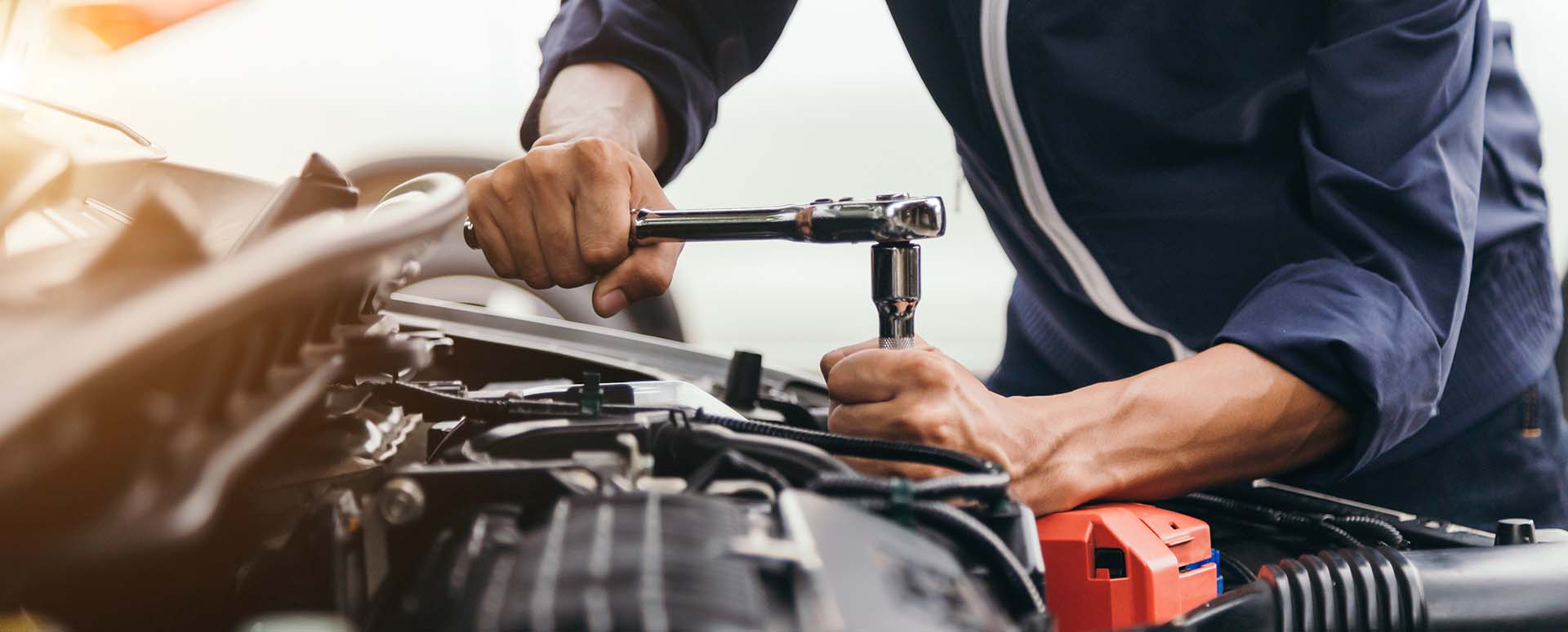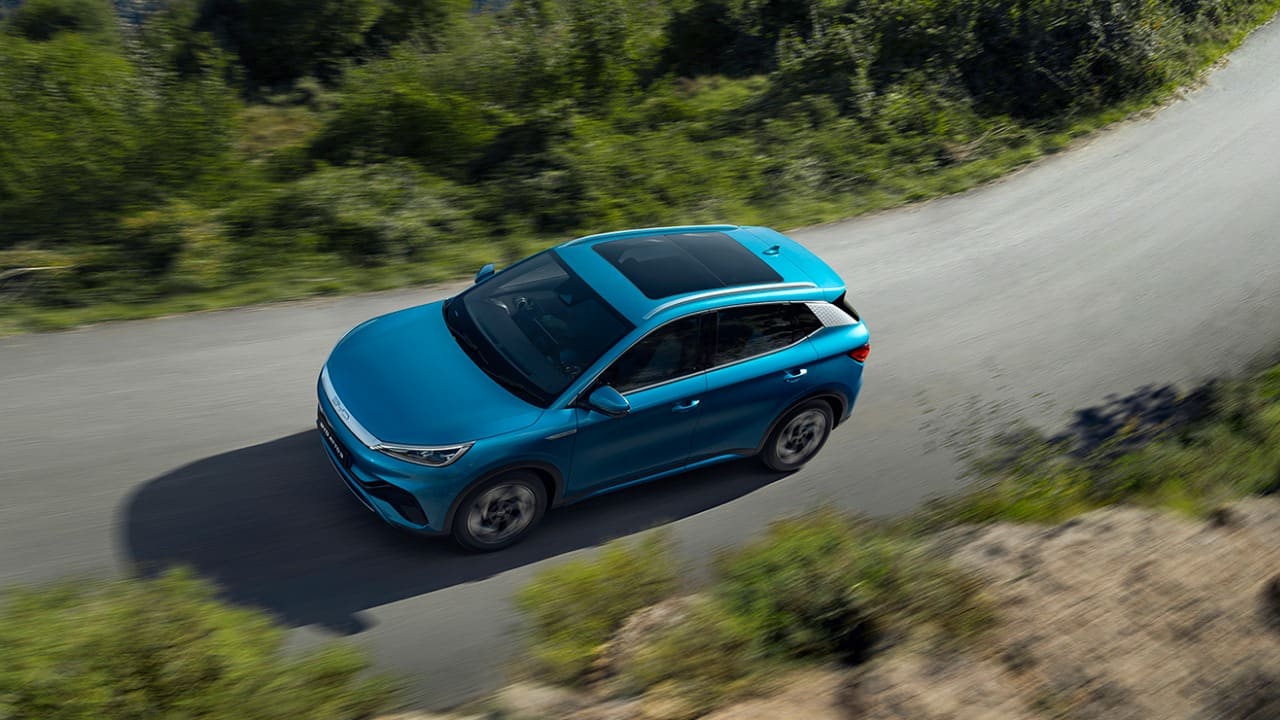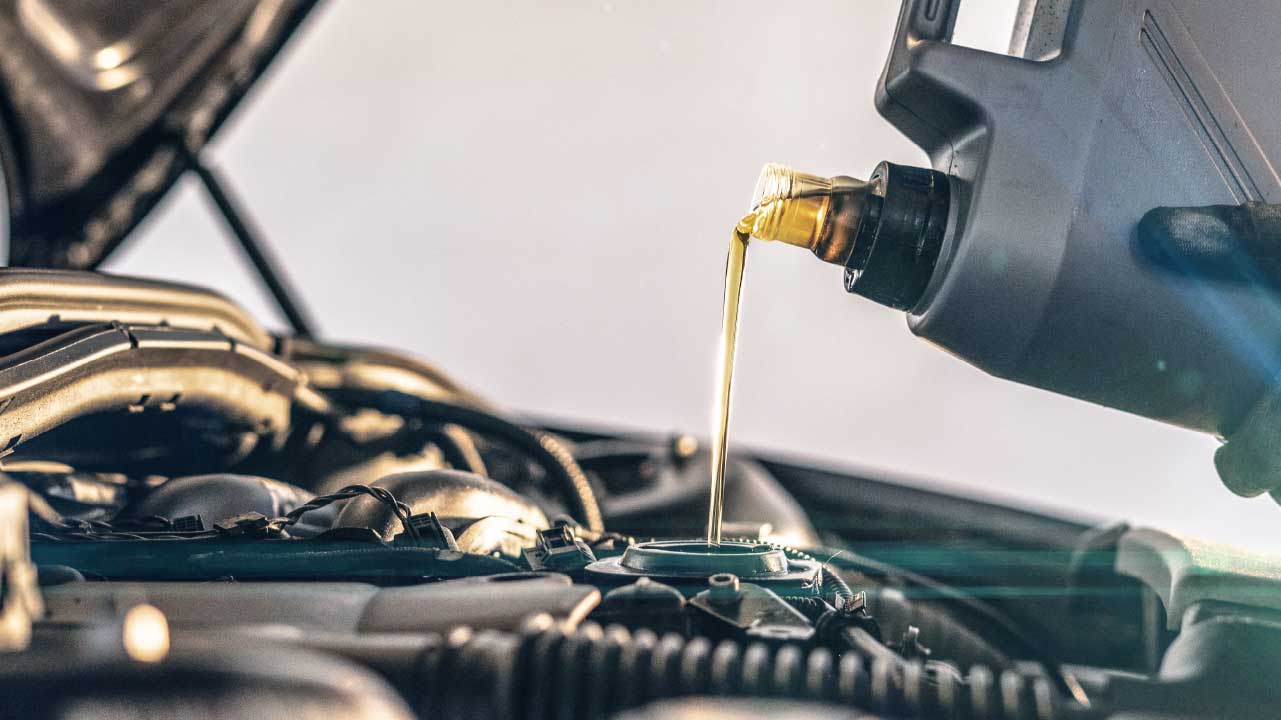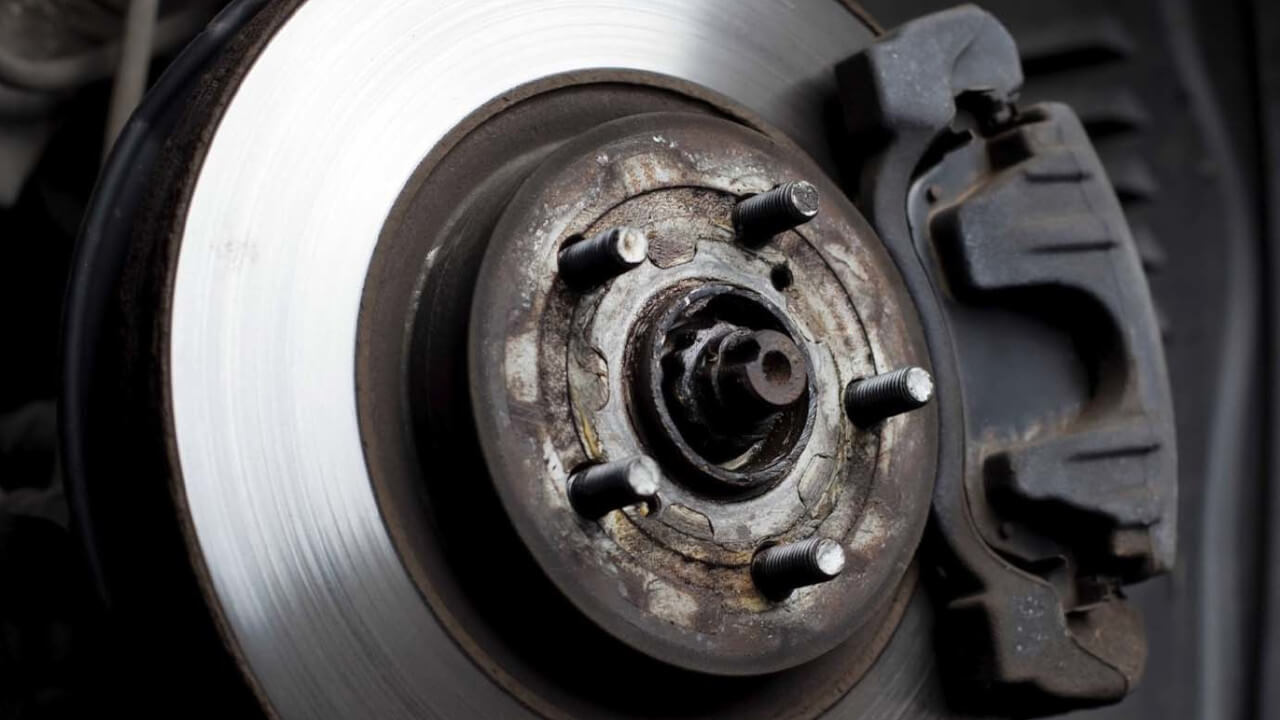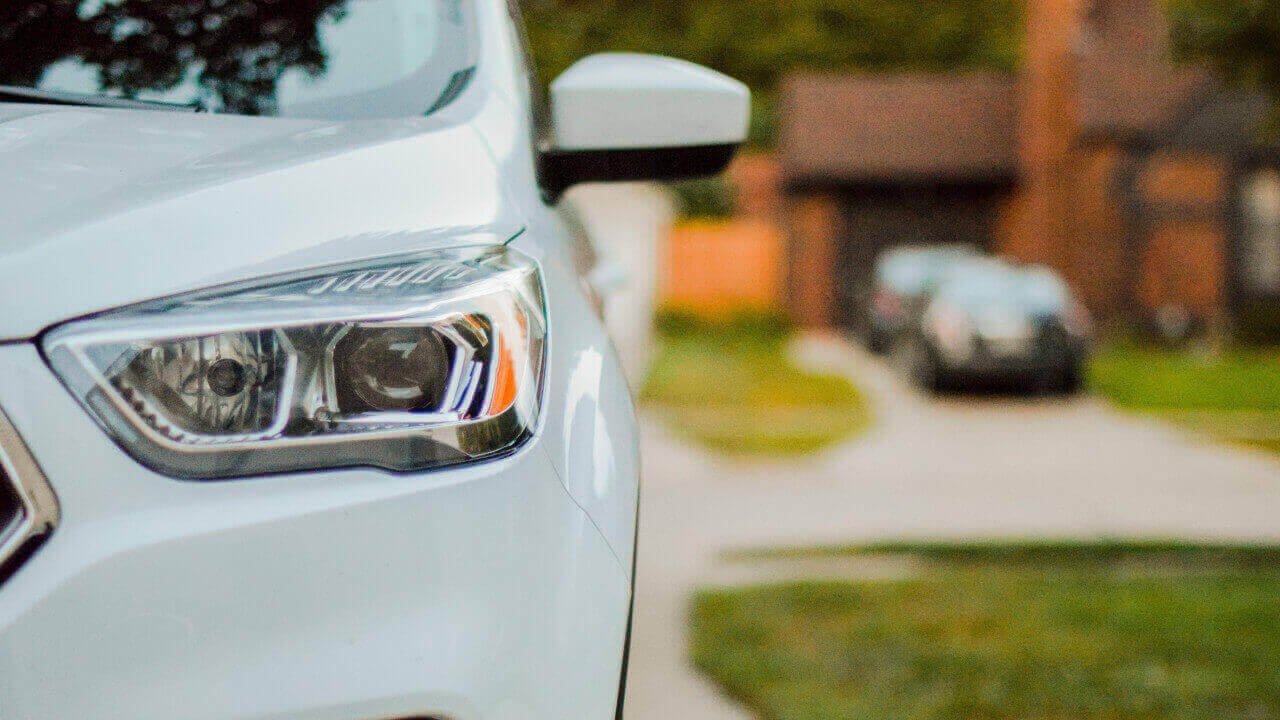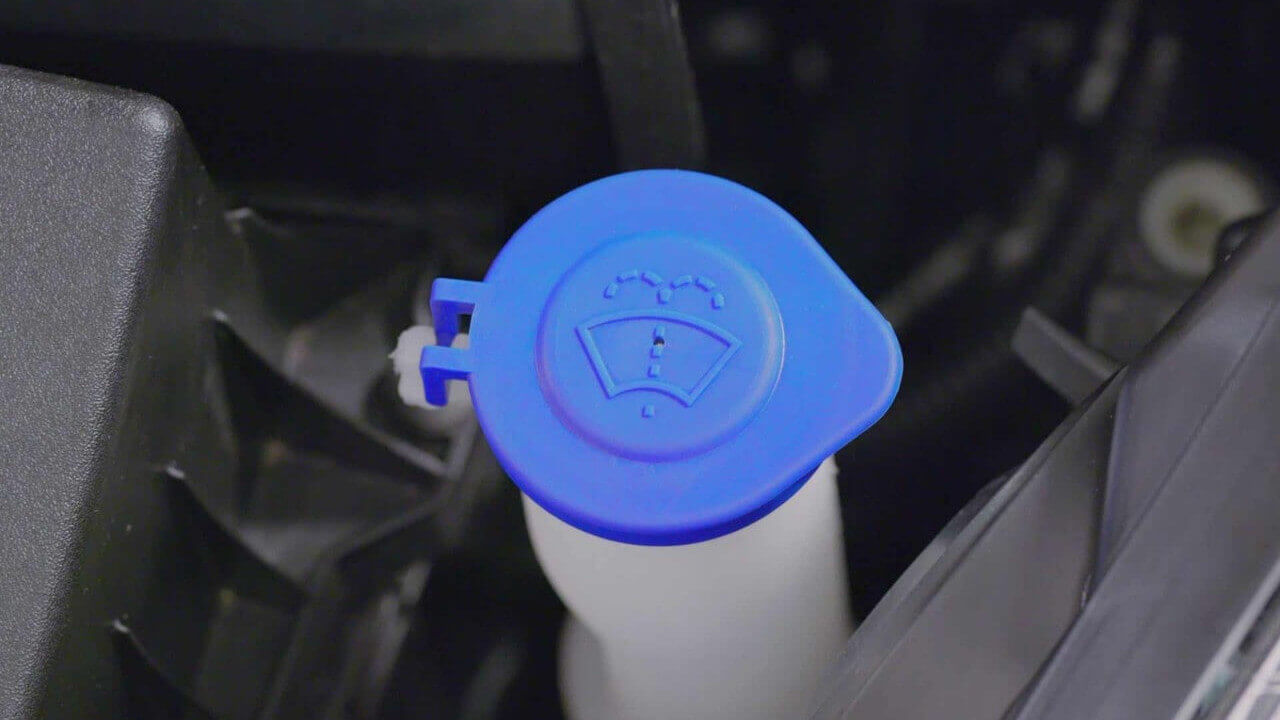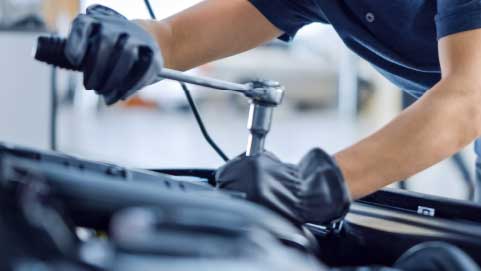Fleet Vehicle Maintenance: Essential Tips & Checklist
16th May 2025
Your vehicle fleet keeps your business moving, ensuring you can attend jobs, transport your tools, deliver your goods, or mobilise your employees. While vehicle maintenance can often feel like an additional chore, following a thorough maintenance plan and schedule can help you avoid more critical problems that have lasting effects on your business operations.
Whether you manage a fleet of vehicles, are a designated driver of your employer's vehicles, or are the keeper of a company car, proactive vehicle maintenance has multiple benefits, including cost-saving, compliance, and enhanced safety. In this guide, we’ll share essential tips and provide a practical fleet vehicle maintenance checklist to help you keep your leased vehicle in top condition.
Here's what we'll cover:
- Why does fleet vehicle maintenance matter?
- Vehicle maintenance checklist
- Regular maintenance tips for drivers
- What responsibilities do fleet managers have?
- How do I complete maintenance work?
Why does fleet vehicle maintenance matter?
Just like any vehicle, your fleet will experience wear and tear over time, requiring you to keep on top of routine maintenance to keep it in great working order. Without proactive maintenance, small issues can quickly escalate into major disruptions, leaving you or your business exposed to several risks that could bring an end to a smooth working day.
Although regular servicing may take your vehicle off the road briefly while remedial work is carried out, it significantly reduces the risk of breakdowns and longer periods of downtime. This also has the long-term benefit of lower costs; routine maintenance preserves the life span of your vehicle's components and is often far cheaper than more complex repair jobs.
Properly following a comprehensive maintenance plan can also protect you from certain fees when you hand the vehicle back at the end of your lease or sell the vehicle. Lease providers expect the vehicle to be well-maintained, and neglecting agreed-upon servicing could result in additional fees. For those that own their fleet vehicles, a properly-maintained vehicle is also much more attractive for prospective buyers than a partially-maintained one, making your life much easier should you choose to sell.
Vehicle maintenance checklist
We've detailed some of the key elements of your vehicle that are worth inspecting and maintaining regularly.
Tyre Checks
As the main contact point between you and the road, your tyres are vital in delivering optimal safety and vehicle control. It's also a legal requirement to ensure your tyres are fit for purpose; this can vary depending on the type of vehicle you're operating, but generally speaking, you'll need:
- Vehicles up to 3,500kg gross vehicle weight: At least 1.6mm of tread depth across the central three-quarters around the complete circumference of the tyre.
- Vehicles over 3,500kg gross vehicle weight: At least 1mm of tread depth across the central three-quarters around the complete circumference of the tyre.
We recommend checking your tyres on a weekly basis to ensure there's plenty of tread left as your vehicle continues its day-to-day activities. Additionally, look out for damage such as flat spots, nails, cuts, bulges, or irregular wear, as these issues will likely need to be addressed as soon as possible, too.
Engine Maintenance
Your engine is the sole driving force within your vehicle, and there are a lot of complex components that require regular maintenance to deliver optimal performance. Nowadays, it's highly likely that most of your fleet's vehicles will be equipped with advanced technology that provides real-time alerts regarding potential issues.
If you're ever met with an engine warning light or any other form of dashboard warning, you'll need to review and act accordingly. Some warning lights are purely precautionary measures and act as a reminder to top up certain fluids before they fall below minimum requirements, while others are more serious in nature - these warnings will need a professional diagnosis before being repaired appropriately.
Service Schedules
Each of your vehicles will come with a service schedule recommended by the manufacturer. By following this accurately, you're prolonging the life of key components of your vehicle, saving you money in the long run. Generally speaking, most vehicles will undergo a standard service every 12 months, but some vehicles will require minor or major services, depending on exact age and mileage.
It's highly likely that your lease provider requires routine maintenance as part of your agreement too, so following the recommended service schedule likely ticks that box. If you own your fleet vehicles outright, a complete service history makes your vehicles more appealing to prospective buyers, ensuring you get additional cash when it's time to sell.
Fluid Levels & Filters
As with most mechanical components, a lubricant or fluid is often required to deliver ultimate performance and efficiency. Your vehicle's main fluids include:
- Brake fluid
- Washer fluid
- Coolant
- Engine oil
- Power steering fluid
- Transmission fluid
Nowadays, most vehicles will provide a warning light on your dashboard to indicate that a fluid level is low, but you may also want to do regular, manual checks to be sure. Some of these, such as washer fluid and engine oil, can be topped up yourself fairly easily, while others require professional assistance - further details can be found in your vehicle's handbook.
Your vehicle will also have a number of filters, such as air filters and pollen filters, that will need replacing periodically as your car ages. You'll need to seek professional assistance for these elements too, but it's highly likely they'll be replaced as part of your routine service schedule anyway.
Glass
Your vehicle's glass is another key component that can greatly improve or hamper your vision and overall safety while driving. Regular inspection of windscreens, windows, and mirrors can help you spot minor damage, such as stone chips, and schedule a repair before they grow into larger cracks.
Certain damage to your windscreen can result in an MOT failure, and you may find yourself in trouble with the law if your windscreen is deemed unsafe for use. If you become aware of damage, we recommend using a professional glass replacement or repair service, as a proper repair can greatly reduce the chance of reoccurring damage.
Brakes
As the primary stopping power, brakes are one of the most vital components of your car, enabling you to slow your car down and react to potential hazards on the road. Over time, your car's brake discs and pads will gradually wear down with use, eventually needing replacing to restore ultimate braking efficiency.
You should visually inspect your vehicle's brakes regularly, noting any unusual or obvious wear. Most brake discs also have wear indicators on the outer edge, too - when this surpasses its limit, you'll need to have them replaced. Other indicators of faulty brakes include:
- Squealing when braking.
- Unusual vibrations or shaking when braking.
- Cracks, heavy scoring, and other visual damage to the brake components.
Number Plates
A dirty, damaged, or missing number plate is another element of your vehicle that can have legal implications. As your vehicle's primary identifier, your number plate allows other road users to identify your vehicle in the case of an emergency or accident, so ensuring it is visible is crucial.
It's worth visually inspecting your number plate on a weekly basis to ensure it is securely attached and clean. If it's dirty and you're in a rush between jobs, a quick clean or wipe will suffice (so long as you can clearly read the number plate), before giving your vehicle a more thorough clean when your work is done.
Lights
Vital for visibility at night, your vehicle's lights allow you to see the road ahead, and for other road users to see you. Damaged or broken lights can lead to a number of serious incidents, such as accidents or legal issues.
With ever-developing technology, most vehicles come with some form of automatic lighting nowadays, automatically detecting which type of lighting is most suitable for the road's conditions. However, it's easy to become overly reliant on these systems, so it's worth double-checking that your lighting is correctly selected before setting off on a journey.
Regular visual inspections of your headlights, brake lights, and hazard lights/indicators are also worthwhile to ensure they're functioning as intended. You may need to seek assistance from a friend or colleague, as you'll need to apply the brakes and switch on hazard lights to properly check the lighting.
Bodywork & Interior
Aside from making your vehicle look the part, its bodywork greatly contributes to overall safety as well. A quick visual inspection of each body panel can go a long way in maintaining your vehicle's general condition over time; look out for scuffs, cracks, chips, or other damage.
Keeping your vehicle's interior in good shape greatly enhances your overall experience too, and can have an impact on safety in the event of a collision. Look out for damage to elements such as the dashboard, seating, and seatbelts, and keep an eye out for loose parts that are faulty.
When your lease comes to an end, your lease provider will have a fair wear and tear policy - if your vehicle is not within the guidelines, you may be subject to additional fees to repair the damage, so it's easier, and more cost-effective, to sort any damage early, before it becomes more serious.
Toolkit and Emergency Preparation
While not technically a check of your vehicle, properly preparing yourself for an emergency can make life much easier should you find yourself in the unfortunate situation.
Some vehicles will come with a toolkit as standard, but if not, you may want to get your fleet some tools such as a tyre inflation kit, hazard warning triangle, high-vis jackets, and a first aid kit. Additionally, ensure all of your fleet's drivers are well-versed in what to do when it comes to emergencies or breakdowns, so you can maintain optimal safety for yourself and your employees.
Regular maintenance tips for drivers
If you're a registered driver of a fleet vehicle, then there are several easy steps you can take to contribute to the general upkeep of the business' vehicles. A regular walk-around of each vehicle can help in identifying obvious damage - we recommend integrating this into your routine for the working day, as frequent lighter checks can often take less time than infrequent, heavier ones.
If you do become aware of any damage, then it's essential you report this to your fleet manager as soon as possible, particularly if safety is a concern. They'll then be able to arrange for suitable repair services to ensure the vehicle is back up and running. If you're out on a job and run into any issues with your vehicle, then some providers may offer a driver helpline to provide support. If you don't have access to a driver helpline, then your fleet manager or employer will need to be contacted and made aware of the issue.
General maintenance is also relatively easy if you just take good care of the vehicles you drive. Keep the interiors nice and tidy, and clean any exterior dirt off in good time. If it's your responsibility to follow the routine maintenance schedule, then staying on track with it goes a long way in keeping your car in top-class condition.
What responsibilities do fleet managers have?
Fleet managers play a central role in keeping business vehicles running smoothly and are responsible for the vast majority of upkeep requirements.
One of the most important responsibilities is managing the service schedules of each vehicle and ensuring they are legally compliant with the UK's road laws. This includes booking regular services and MOTs, as well as keeping an eye on mileage intervals and reported damage that may trigger additional checks, repairs, or replacements. Keeping on top of documentation also ensures you have a complete history to refer back to, making your vehicle more appealing for potential buyers if you are in a position to sell, or protecting you from unforeseen charges when you hand the vehicle back at the end of your lease.
Fleet managers are often the first point of contact for their drivers too, and need to act accordingly in the case of emergencies, damage, and general faults. They need to act accordingly, whether that's scheduling repairs or arranging replacement vehicles in the case of downtime, and should make it easy for drivers to report faults and incidents.
Other key responsibilities include:
- Ensuring compliance: Keeping vehicles roadworthy and legally compliant, including tax, insurance, and MOT status.
- Tracking costs: Monitoring spend on maintenance, repairs, and downtime to identify trends and reduce unnecessary costs.
- Working with leasing providers: Managing maintenance agreements and ensuring service-level terms are met throughout the lease.
Ultimately, a proactive fleet manager keeps vehicles safe, compliant, and cost-effective, allowing drivers to focus on their jobs and the business to operate without unnecessary setbacks.
How do I complete maintenance work?
When it comes to completing maintenance work on your vehicle, the first step is to check your lease agreement. Most leasing providers will include a maintenance package or outline the type of work you're responsible for, so it’s important to understand what’s covered and what’s not.
For day-to-day upkeep like topping up washer fluid, checking tyre pressure, or cleaning the vehicle, these are usually tasks you or the driver can handle. However, more technical jobs such as brake replacement, engine diagnostics, or electrical issues will need to be carried out by a qualified professional.
Many fleet operators work with approved repair centres or garages recommended by their leasing provider. If that’s the case, all maintenance and repair work should go through these partners to ensure compliance and maintain warranty coverage. Some providers also offer mobile maintenance services, making it easier to complete basic work without taking the vehicle off the road.
If you're ever unsure, refer to your vehicle handbook or contact your fleet manager or lease provider for guidance. Staying informed and acting quickly when an issue arises is the best way to keep your vehicle roadworthy and avoid bigger problems later on.
Fleet maintenance made simple
Staying on top of fleet vehicle maintenance doesn’t have to be time-consuming or overwhelming. With a proactive approach and the right processes in place, you can minimise downtime, improve safety, and reduce long-term costs, keeping your fleet on the road and your business running smoothly.
At Pendragon Vehicle Management, we’re here to help take the stress out of fleet maintenance. Whether you're managing a handful of vehicles or a full-scale operation, our expert support and tailored maintenance solutions are designed to keep you compliant, efficient and ready for whatever the road brings.
Want to take the hassle out of fleet maintenance? Get in touch with us today or explore our maintenance management solutions to find the right fit for your business.

